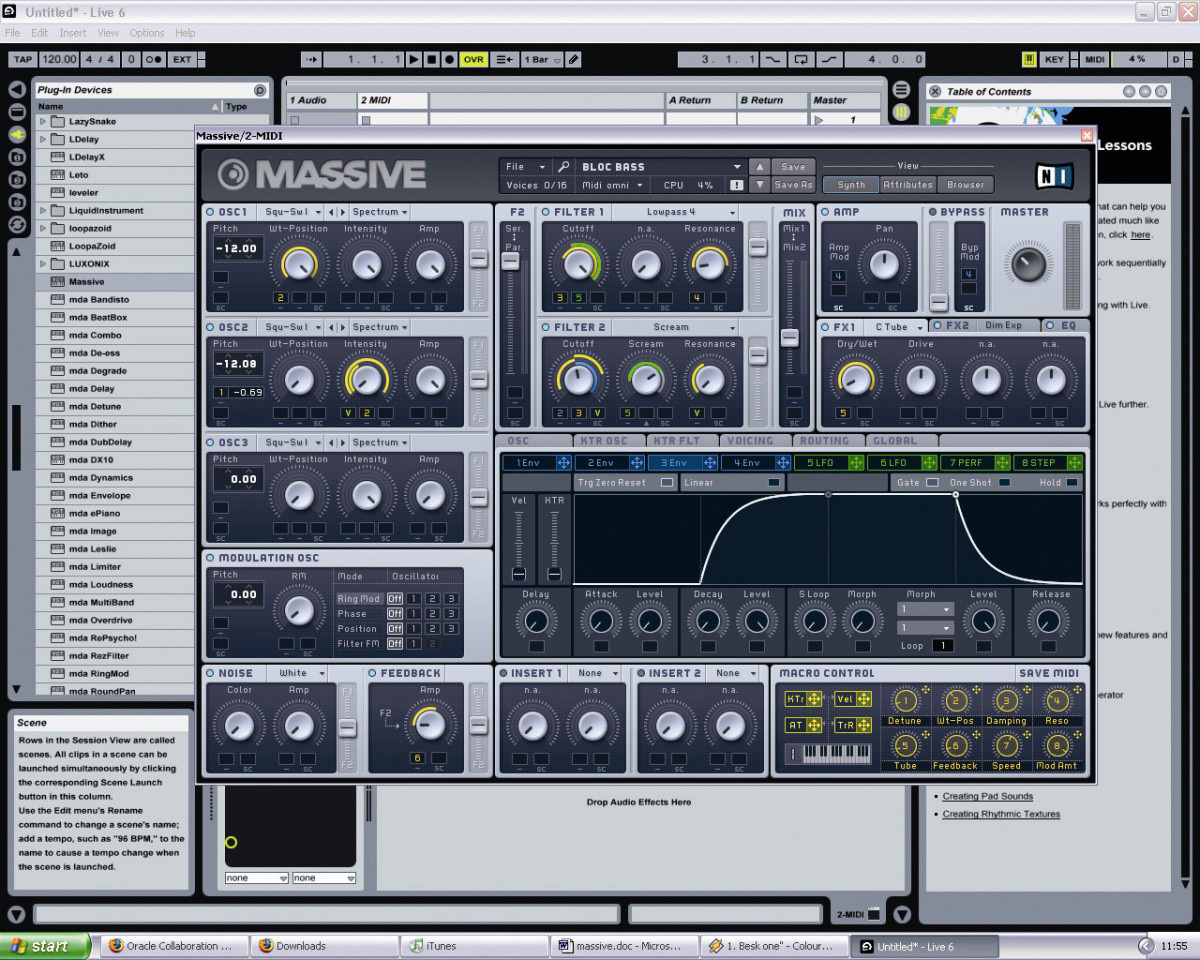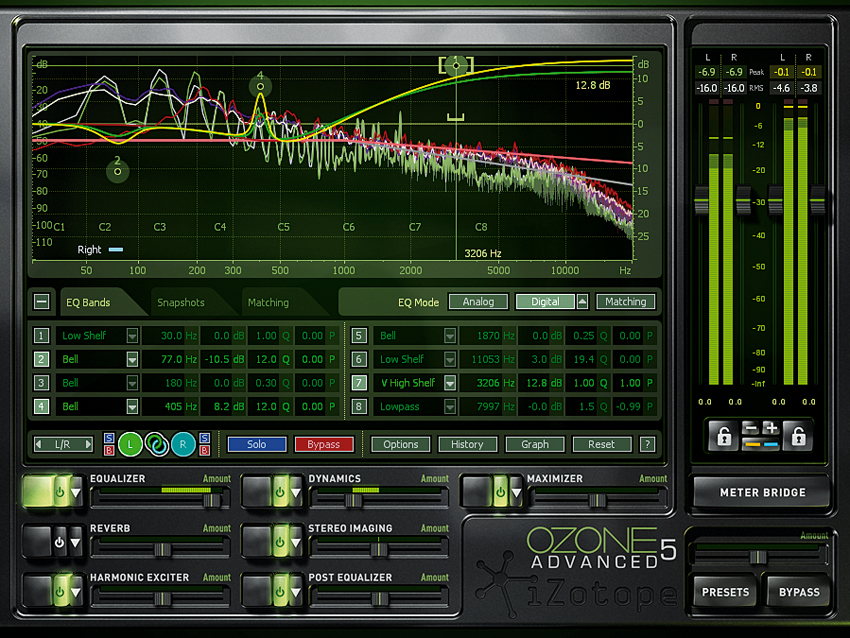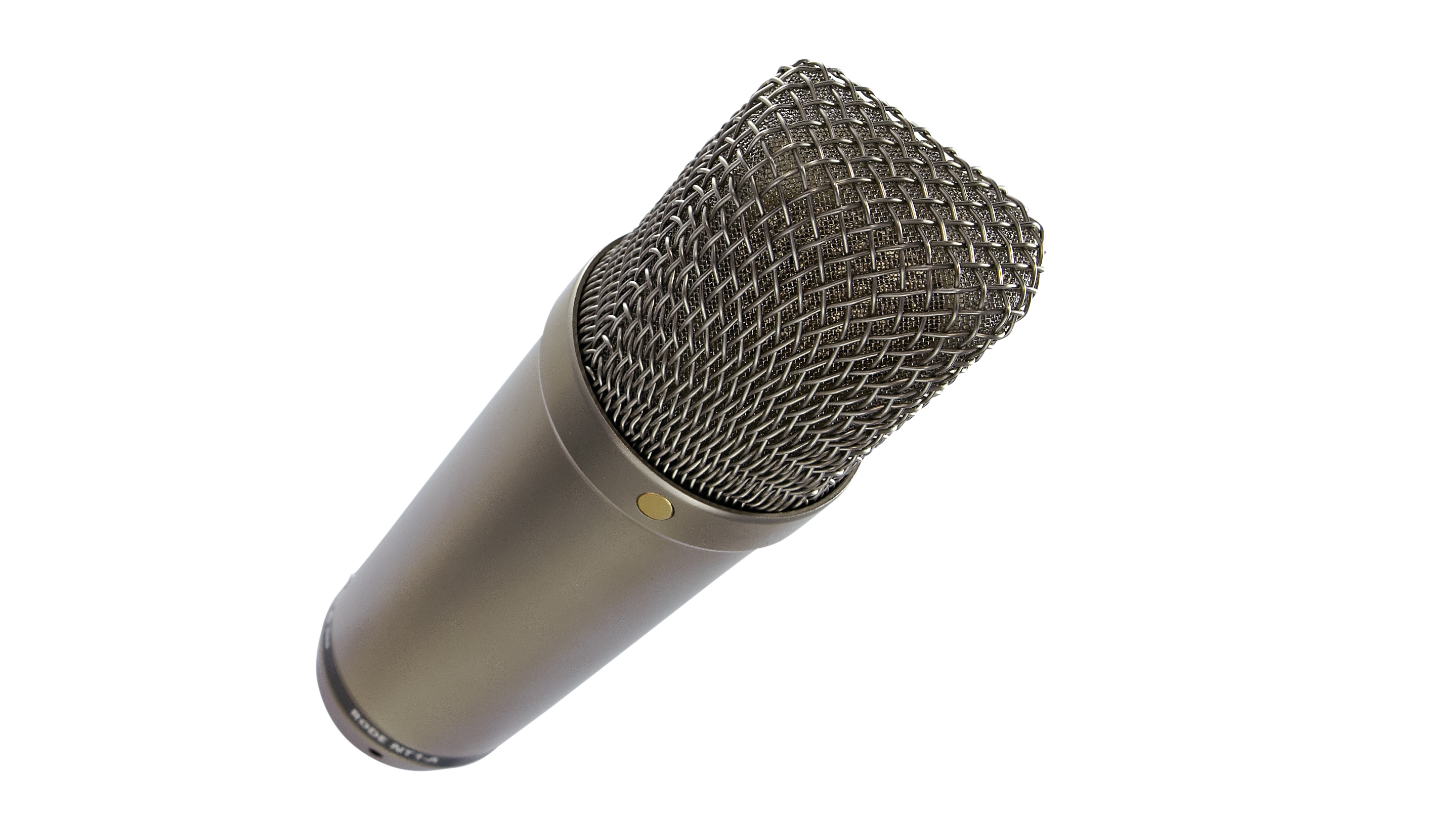The A to Z of computer music: M (part one)
So massive we've had to split it into two

So massive we've had to split it in two, read up on the letter M in our mammoth monthly map of the music-making mother-tongue.
Mac OS X
The operating system powering Apple's Macintosh computers, based on Unix and first released for server usage in 1999, followed by the desktop client in 2001.
Up until the latest, each version of OS X has been named after a big cat - Cheetah, Panther, Lion, etc. OS X 10.9, however, unleashed in October 2013, sees a shift in nomenclature to California landmarks, the first being Mavericks, a famous surfing hang-out.
After Microsoft Windows, OS X is the second most popular desktop operating system in the world, renowned for its ease of use and stability.
Macro
An increasing number of DAWs and plugins - including Ableton Live, Apple Logic Pro X and Native Instruments' Massive - feature macro controls. These are customisable banks of knobs and buttons, each of which can be assigned to one or more controls from anywhere within the plugin or, in the case of DAWs, instruments and effects in the channel strip/rack.
Macros enable 'performance' setups to be quickly put together, giving ready access to a custom set of parameters of the user's choice in one handy interface.
Major/minor
In Western music, major and minor describe a range of melodic and harmonic properties, including key, intervals, scales and chords.
Get the MusicRadar Newsletter
Want all the hottest music and gear news, reviews, deals, features and more, direct to your inbox? Sign up here.
Adhering to a formal structure that's existed for centuries, minor keys, scales, chords and intervals are generally perceived as having a 'sad' or 'moody' sound, while major ones sound more upbeat and 'happy'.
While we don't have space here to get into detail, you can start your investigations into these essential musical concepts by learning to appreciate the difference between major and minor scales.
Start on any note of the keyboard and play this sequence to get a major scale (a tone is two steps up the keyboard, including black notes; a semitone is one step): T T S T T T S. For the minor version of the same scale, play: T S T T S T T.
Mapping
The process of assigning a target parameter to a controlling source parameter or controller is known as mapping, as is the process of assigning samples to notes on the keyboard in a sampler.
For example, when you set one of the abovementioned macros up to control, say, the cutoff and resonance parameters of a filter, the connection made between them is a mapping, as is linking a knob on your hardware MIDI controller to a parameter on a synth.
Massive
Undoubtedly Native Instruments' most successful and best known software synthesiser, Massive is a semimodular virtual analogue and wavetable instrument with a huge array of waveforms onboard, extraordinary modulation capabilities, a bank of Macro controllers for designing custom control interfaces, and, most importantly, a sound so powerful it could sink a battleship.
Massive has played a huge part in defining the sounds of dubstep and bass music in general, thanks to its idiosyncratic low-end tones and razor-sharp leads.

Master buss/channel
The final output channel of any audio mixer - hardware or software. The individual channels, groups and busses that make up the mix all end up 'summed' at the master channel, which is where the final level is set and any master effects (those intended to process the whole mix) are added. Exceeding 0dBFS is to be avoided at all costs on this bus, as it will result in nasty digital clipping.
Mastering
Once a track is written and mixed, the final stage of production is mastering. Originally a necessity to prepare singles and albums for the physically sensitive requirements of the vinyl cutting lathe, mastering these days is about maximising transient punch, dynamic and frequency-wide clarity and control, and stereo spread, as well as making sure that the mix comes across well on as wide a variety of playback systems as possible.
It's a highly specialised process calling for the very careful application of EQ, dynamics and other effects (either separate plugins or hardware modules, or a mastering suite such as iZotope's industry standard Ozone) to a finished mix, either by placing such effects on the master bus of an otherwise finished project or by applying them to a rendered mixdown of the track.
In the wrong hands, mastering effects can do more harm than good, so consider commissioning an experienced mastering engineer for critical tasks - indeed, many would argue that mastering your own tracks is ill-advised.

Megabyte
Abbreviated as MB, a megabyte is an amount of disk or memory storage space equal to 1,000,000 or 1,048,576 bytes, depending on context: the former reported by modern operating systems for disks, the latter for memory.
The reason for the discrepancy is that storage volumes are described using the '2 to the 20th power' rule, which yields the value 1,048,576. For music production purposes, however, all you really need to know is that 1MB equates to about one minute of compressed near-CD-quality audio (MP3, say) or about six seconds of uncompressed CD-quality audio.
Memory (RAM)
The array of chips in any computer that stores data for immediate or short-term processing, RAM (Random Access Memory) differs from other storage media in that data can be read from and written to it in any order, as contrasted with the scheduled access necessitated by the physical design of hard disks, DVD-ROMs, etc - ie, the linear movement of the read/write head or laser.
RAM is also much, much faster than disc-based storage, as it needs to be to keep up with the CPU and other speedy onboard components that come together to create a computer.
While the RAM in your Mac or PC is volatile (ie, when the system is powered down, its content is lost), non-volatile RAM also exists, such as the ROM (read-only memory) in your old hardware synths and sound modules, and the NVRAM in your USB flash drive.
Microphone/mic
A device that converts acoustic vibrations into electrical signals, the microphone is clearly one of the most important inventions in the history of music technology.
Several types of microphone exist, at a wide range of prices. The cheapest, most robust type is the dynamic microphone, which is particularly well suited to high-volume sources such as guitar amps, snare drums and live vocals. The more delicate condenser and ribbon types make better options for less explosive sources, such as acoustic instruments and studio vocals.
There are other types available, too, but for music production, dynamic, condenser and ribbon are the essentials that you need to be familiar with.

Mid/side recording and processing
After capturing a sound source using a direct cardioid mic and a sideways facing omnidirectional mic, or converting an existing stereo audio file within a mid/side-capable plugin, the resulting mono 'mid' and stereo 'sides' signals can be manipulated and processed independently (EQ just on the sides, compression just on the mid, for example), then turned back into normal stereo audio for conventional use within your DAW or sampler.
Mid/side processing is incredibly useful for controlling stereo imaging and the weight of sounds in the centre of the mix, which is an important factor in making stereo tracks compatible with mono playback systems.
MIDI
Musical Instrument Digital Interface. Standardised in 1983 (credit for the invention itself goes to Sequential Circuits' Dave Smith and Chet Wood), MIDI is a protocol agreed on and adhered to ever since by electronic instrument manufacturers and software developers that enables their devices to talk to each other.
For example, a MIDI controller keyboard typically sends out MIDI note, velocity, aftertouch and controller data that your DAW is designed to understand and use appropriately for triggering and controlling plugin instruments.
Despite its age and the occasional attempt to improve on it, the MIDI specification is essentially the same today as it was when first conceived, and we don't envision it changing significantly any time soon.
Mid-range
In the audible frequency spectrum, mid-range describes the range 300Hz-2500kHz or thereabouts. Crucially, this is the area that contains the majority of intelligible vocal information, as well as the dominant frequencies of many instruments.
While many novice producers put plenty of effort into solidifying the high- and low-ends of the mix, the mids often get overlooked, resulting in a lack of presence and punch. No doubt about it, the mid-range is every bit as important as the more immediately satisfying highs and lows.
Computer Music magazine is the world’s best selling publication dedicated solely to making great music with your Mac or PC computer. Each issue it brings its lucky readers the best in cutting-edge tutorials, need-to-know, expert software reviews and even all the tools you actually need to make great music today, courtesy of our legendary CM Plugin Suite.










